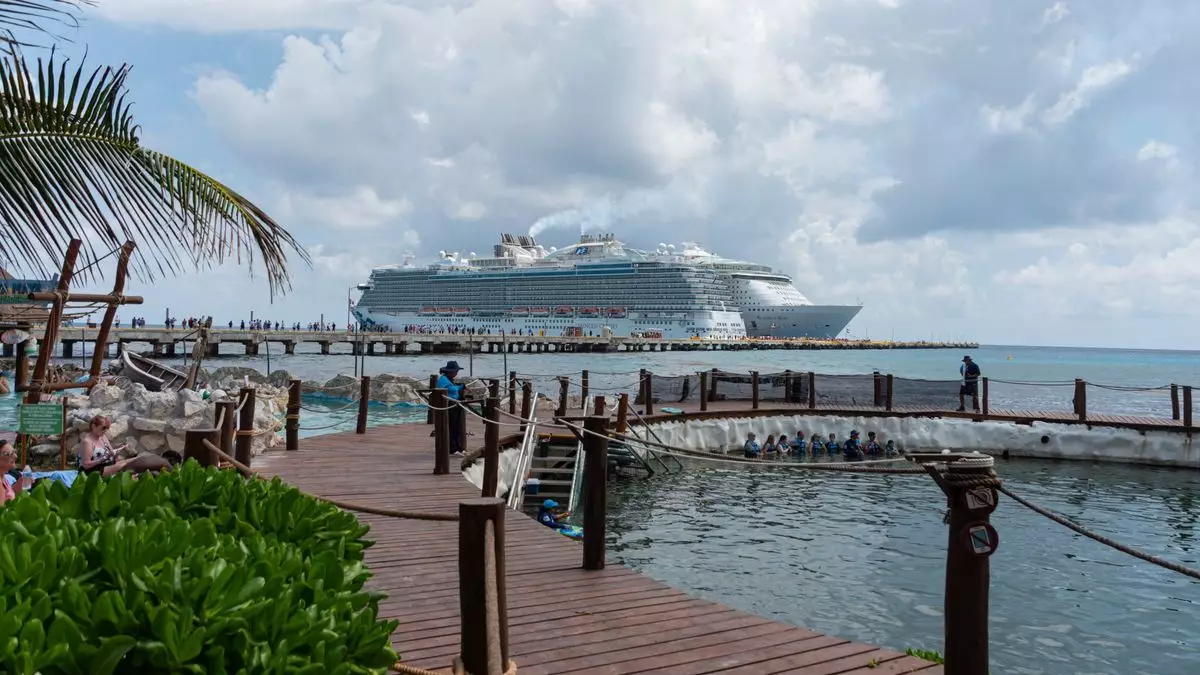The recent approval of a $42 head tax on cruise passengers by the Mexican legislative branch has generated significant discussion and concern within the cruise industry. Set to take effect on January 1, 2025, this tax could profoundly affect the attractiveness of Mexican ports, especially given the context of increasing operational costs for cruise lines and shifting traveler preferences. This article aims to dissect the ramifications of this new taxation, evaluating both the immediate and long-term impacts on cruise tourism in Mexico.
Historically, cruise passengers in Mexico were exempt from various tourist taxes, as their brief stays typically involved disembarking only for a few hours. The new tax seeks to level the playing field between travelers entering Mexico by air and those arriving via cruise ships, as the government reasons that all foreign visitors should contribute to local economic support. This shift reflects a broader trend among countries and regions that seek to extract revenue from the thriving cruise industry, which is often seen as a lucrative yet relatively low-impact source of tourism income.
Proponents of this tax argue that it’s essential for addressing the financial burdens placed on local governments, which must manage the infrastructure and services that accommodate hundreds of thousands of cruise passengers each year. However, this justification raises critical questions about the actual benefits of such taxes to the communities that host these travelers.
Potential Repercussions on Cruise Demand
Industry experts, including representatives from the Florida-Caribbean Cruise Association (FCCA), warn that this new tax could dissuade cruise lines from scheduling stops in Mexico. With cruising costs poised to rise significantly due to the tax—213% higher than average Caribbean port fees, as stated by the FCCA—many passengers may opt for alternatives, potentially redefining cruising trends.
Witnessing a steady decline in traveler interest in Mexican destinations, the FCCA and travel professionals argue that this tax comes at a time when demand is already wavering due to several factors, including geopolitical uncertainties and an uptick in preferences for destination-based vacations. This shift suggests that families and groups, generally drawn in by the value proposition of cruises, might reconsider their options because of rising costs.
Moreover, the timing and implementation of the tax have also raised concerns. Michele Paige, CEO of FCCA, highlighted the need for clear communication and preparation time. Without proper guidance, the industry may experience confusion, further complicating cruise operators’ planning and marketing strategies.
Quintana Roo is sharply in focus as it hosts some of Mexico’s most frequented cruise ports, like Cozumel and Costa Maya. The FCCA reports that cruise tourism is integral to the state’s economy, contributing nearly 40% of its Gross Domestic Product (GDP). Directly raising costs for cruise passengers could lead to decreased foot traffic, diminished spending in local economies, and a significant threat to jobs reliant on cruise tourism.
Local businesses that cater to cruise passengers, from souvenir shops to excursions, depend on the influx of these tourists. If fewer ships choose to dock at Mexican ports, or if the demographic of cruise travelers changes due to increased costs, the local economy could suffer. Rising frustrations among travelers with increased taxes and fees could exacerbate these trends, diminishing the appeal of a once-robust cruise stop.
The challenges posed by this new tax highlight a broader issue of how regions manage tourism in the wake of fluctuating global economic conditions. While the Mexican government aims to distribute tax burdens more evenly, it must also consider how such policies could alienate essential revenue sources. Alternatives, such as improving existing services or refining the tourist experience, could provide pathways for enhanced local revenue without risking a decline in visitor numbers.
Moreover, as cruise operators adapt to the evolving economic landscape marked by these new taxes and traveler preferences, they may innovate their offerings—potentially focusing on more immersive port experiences to justify higher costs. If cruise lines successfully incorporate these charges into their overall pricing strategies without sacrificing quality, they may maintain and even increase interest in Mexican ports.
While the $42 head tax may seem a straightforward revenue-generating mechanism, its broader implications could reshape the cruise tourism landscape in Mexico significantly. Without careful consideration of the delicate balance between taxation and tourism appeal, the Mexican government risks losing out on critical tourism revenue and local economic benefits. Stakeholders must remain vigilant as this policy unfolds, ponder its influence on traveler habits, and explore innovations that can maintain Mexico’s allure as a cruising destination.


Leave a Reply